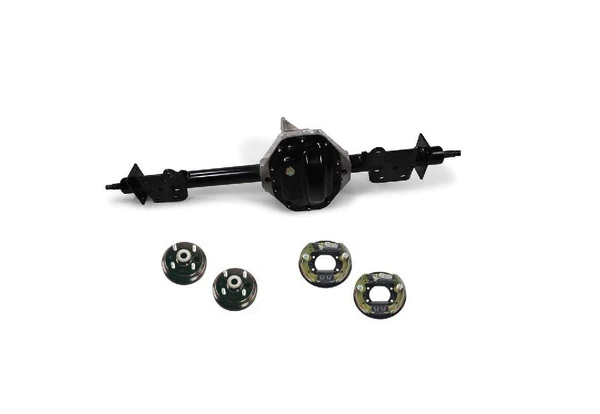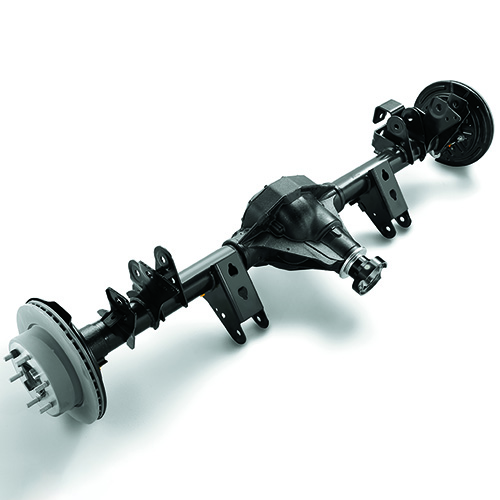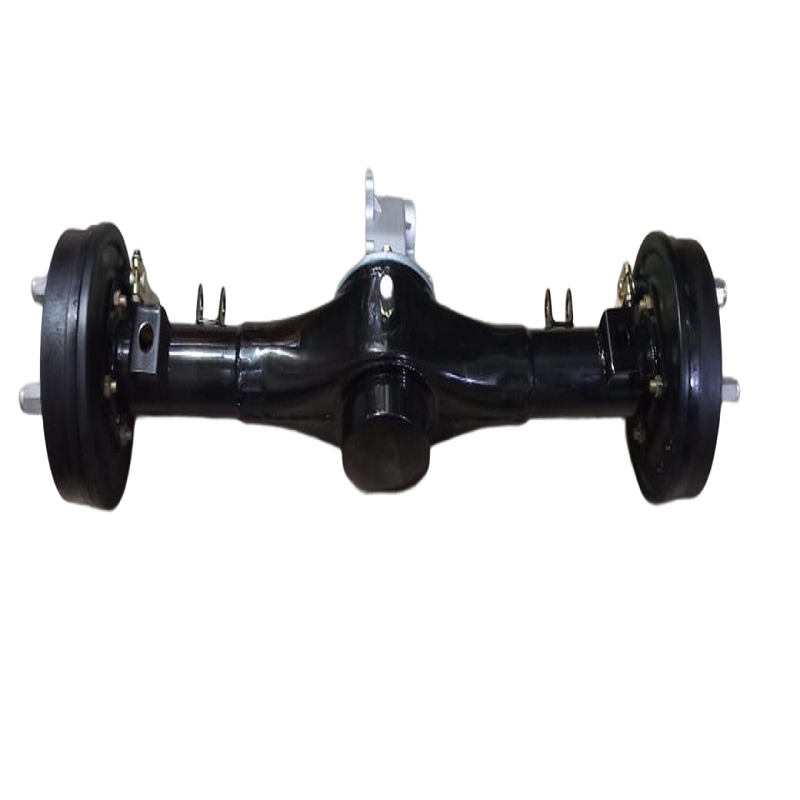Product Description
Detailed Photos
Product Parameters
| Brand of Vehicle | Xihu (West Lake) Dis. Feng (New) | ||
| Model of Vehicle | CLW5180BX1V | ||
| Model of Chassis | DFL1160BXW | ||
| Drive type | 4×2,LHD | ||
| Cab | Single,2315mm, Kingrun 1 and a half row cab ,forward control type , all welded steel cab of tilt type, mechanical cab tilting, rear mechanical cab suspension , adjustable driver's seat, air conditioning system. | ||
| Air conditioner | YES | ||
| Passages | 3 | ||
| Overall Length | 8800 mm | ||
| Overall width | 2500 mm | ||
| Overall height | 3500mm | ||
| Loading Weight | 22000kg | ||
| Net weight | 11205kg | ||
| Wheelbase(mm) | 3800+1300 | ||
| Engine | Type | B190 33 / 190HP | |
| Emission level | Euro3 | ||
| Maximum power | 140kw | ||
| Number of cylinders | 6 | ||
| Maximum torque | 650 | ||
| Displacement (lit) | 5.9L | ||
| Stroke (mm) | 120 | ||
| Cylinder bore (mm) | 102 | ||
| Max.torque | 670(N.m) /1300-1500(rpm) | ||
| System | Cummins/ diesel/ vertical-6 cylinders, Water cooled, turbocharged, after cooled | ||
| Transmission | Type | Fast/DF6S900 | |
| Number of gears | 10-Gear Gearbox | ||
| Tire specification | 315/80R22.5 6+1 | ||
| axle | Front | 4.5T | |
| Rear | 10T | ||
| Brake System | Full air brake system, split pneumatic circuit , parking spring brake acting on rear axles , exhaust brake | ||
| Battery | Voltage (V) | 24 | |
| Battery capacity (A.h) | 140*2 | ||
| Color | White and blue | ||
| Fuel tank | Type | Steel fuel tank, with lockable cap | |
| Capacity | 160lit | ||
Packaging & Shipping
Company Profile
1, ChengLi Special Automobile Co.,Ltd, which was appointed by the Development and Reform Committee of China, is the biggest special purpose vehicle manufacturer in China.also we are famous manufacturer producing all kinds of special trucks for municipal & environmental construction, virescence, petrol & medicals, container, and semi-trailer. Brands registered include CLW.Our company has independent export right and has a mount of clients in overseas. Our leading varieties include more than 100 types of trucks and related products such as water truck, fecal suction truck, garbage truck, refuse compactor, sewage suction truck, fuel tank, high-altitude operation truck, truck with crane, dump truck, instructional truck, van truck, semi-trailer, fire engine, refrigerator truck, water wagon, tractor, high-altitude water truck, bulk cement truck, chemical liquid truck, concrete mixer truck, and others.
2.Our company has CHINAMFG technology, flawless inspection, advanced equipment, reliable quality and flexible modes of operation. What's more, our company has roundly passed ISO9001:2000 and CCC (China Compulsory Certification) certifications. Series trucks of Cheng Li have procured remarkable achievements interiorly, especially from the investment in South Suburb Cheng Li Automobile Industry Park.
We have been in this field for over 10 years, we have more than 300 types of special trucks, our workers are more than 1000 and factory is more than 690,000m2 .We have successfully exported our trucks to Ghana, Sudan, Nigeria, Tajikistan, Namibia, Burma, Korea, Iran, Iraq, Vietnam etc. many Africa & Asia countries more than 4000 trucks every year.
3.Quality control:our company truck pass ISO,3C,BV certification.
our factory have the quality Quality Inspection Department.before sending truck for facotry ,our quality inspection department will check the truck carefully.
4.Design capacity :Our factory have 30 technician and designer.
5. Exhibition:our factory attend the HangZhou Trade Fair each year.
6. Export market: Africa,Asia,South America,Pacific and so on.
7.Our company cooperate with famous chasis manufacturers,include all chinese brand like CHINAMFG , XIHU (WEST LAKE) DIS.FENG , CHINAMFG , CHINAMFG , CHINAMFG , GENLYON , NORTHBENZ , CHINAMFG , JAC , CHINAMFG .
FAQ
1.What is your terms of payment?
A: T/T, 30% as deposit, and 70% before delivery. we'll show you the phone and video of truck, before you pay the balance.
2.What is your terms of delivery?
A: EXW, FOB, CIF.
3.How about your delivery time?
A: Generally, it will take 30 to 60 days after receiving your advance payment. The specific delivery time depends on the items and the quantity of your order.
4.Do you test all your goods before delivery?
A: yes of course, we have 100% test before delivery.
5.How do you make our business long-term and good relationship?
A: We keep good quality and competitive price to ensure our customers benefit; we respect every customer as our friend and we sincerely do business and make friends with them, no matter where they com from.
After Sales Service
1. Customers can enjoy a maximum warranty period of 12 months or 10,000 kilometers, whichever comes first, from shipment date on Bill of Lading.
2. During this period, if any failure, we will send replacement parts and components to customers by DHL,UPS, FEDEX free. Normal wear or fast consumables are excluded.
3. After this period, the parts can be provided at cost price.
4. This warranty does not cover damage due to improper use, accident or misuse or damage due to any unauthorized services.
5. If the goods are determined to be defective in materials or workmanship, we will, at ours
option, repair or replace the goods
/* January 22, 2571 19:08:37 */!function(){function s(e,r){var a,o={};try{e&&e.split(",").forEach(function(e,t){e&&(a=e.match(/(.*?):(.*)$/))&&1
| After-sales Service: | Free Parts and Video Online |
|---|---|
| Warranty: | One Year |
| Volume: | 5001 - 10000L |
| Customization: |
Available
|
|
|---|
.shipping-cost-tm .tm-status-off{background: none;padding:0;color: #1470cc}
|
Shipping Cost:
Estimated freight per unit. |
about shipping cost and estimated delivery time. |
|---|
| Payment Method: |
|
|---|---|
|
Initial Payment Full Payment |
| Currency: | US$ |
|---|
| Return&refunds: | You can apply for a refund up to 30 days after receipt of the products. |
|---|

Can you provide examples of popular rear differential ratios and their effects on vehicle performance?
Yes, different vehicles are equipped with various rear differential ratios, which can have a significant impact on vehicle performance. The rear differential ratio determines the number of times the driveshaft must rotate for the rear wheels to make one complete revolution. Here are examples of popular rear differential ratios and their effects on vehicle performance:
- 3.73:1:
- 4.10:1:
- 3.21:1:
- 2.73:1:
- 4.56:1:
A 3.73:1 rear differential ratio means that the driveshaft will rotate 3.73 times for every one revolution of the rear wheels. This ratio is often found in performance-oriented vehicles or trucks designed for towing and hauling. The lower numerical value provides quicker acceleration and improved torque to the wheels. Vehicles with a 3.73:1 ratio may exhibit more responsive off-the-line acceleration and enhanced towing capabilities. However, the trade-off is slightly reduced fuel efficiency at higher speeds due to the engine running at higher RPM.
A 4.10:1 rear differential ratio offers even quicker acceleration and enhanced low-end torque compared to the 3.73:1 ratio. This ratio is commonly found in performance cars, off-road vehicles, or trucks designed for heavy towing or hauling. The higher numerical value provides more torque multiplication, allowing for improved off-the-line acceleration and better low-speed crawling ability in off-road situations. However, similar to the 3.73:1 ratio, the higher RPM at highway speeds can result in reduced fuel efficiency.
A 3.21:1 rear differential ratio is often used in vehicles focused on fuel efficiency, such as sedans or crossover SUVs. This ratio provides a good balance between acceleration and fuel economy. The higher numerical value allows for lower engine RPM at highway speeds, resulting in improved fuel efficiency. However, vehicles with a 3.21:1 ratio may exhibit slightly slower off-the-line acceleration and reduced low-end torque compared to vehicles with lower ratios.
A 2.73:1 rear differential ratio is commonly found in vehicles prioritizing fuel efficiency over performance. This ratio allows for even lower engine RPM at highway speeds, maximizing fuel economy. Vehicles with a 2.73:1 ratio may exhibit slower acceleration and reduced low-end torque compared to vehicles with higher ratios. However, the trade-off is improved fuel efficiency during extended highway driving.
A 4.56:1 rear differential ratio is typically found in off-road vehicles or trucks designed for extreme off-road conditions. This ratio provides enhanced torque multiplication, allowing for excellent low-speed crawling ability and improved traction in challenging terrain. Vehicles with a 4.56:1 ratio may exhibit slower acceleration and higher engine RPM at highway speeds, resulting in decreased fuel efficiency. However, the trade-off is superior off-road performance and the ability to tackle steep inclines and obstacles.
It's important to note that the effect of rear differential ratios on vehicle performance can also be influenced by other factors such as engine power, transmission gearing, tire size, and overall vehicle weight. The selection of a rear differential ratio depends on the intended use of the vehicle, whether it's focused on performance, towing, fuel efficiency, or off-road capability. It's always recommended to consult with vehicle manufacturers, automotive experts, or performance specialists to determine the most suitable rear differential ratio for specific vehicle applications and performance goals.

Are there specific lubricants or fluids used in the rear differential, and how often should they be changed?
Yes, specific lubricants or fluids are used in the rear differential of a vehicle. The type and specifications of the fluid depend on the specific vehicle make, model, and differential design. Here's a detailed explanation of the lubricants or fluids used in the rear differential and their recommended change intervals:
- Gear Oil:
Gear oil is the primary lubricant used in rear differentials. It is a specialized oil designed to withstand the extreme pressures and temperatures experienced within the differential. Gear oils are formulated with additives to provide proper lubrication, reduce friction, and protect the gears and bearings from wear. The viscosity or thickness of the gear oil is specified by the vehicle manufacturer and can vary depending on the differential design and operating conditions.
It's important to use the gear oil recommended by the vehicle manufacturer to ensure compatibility and optimal performance. The specific type and viscosity of gear oil required for the rear differential can be found in the vehicle's owner's manual or by consulting the manufacturer's guidelines. Common gear oil specifications include API GL-5 or GL-4 ratings.
- Change Interval:
The recommended change interval for rear differential fluid varies depending on the vehicle manufacturer, driving conditions, and differential design. It's crucial to refer to the owner's manual or manufacturer's guidelines for the specific recommended interval. In general, the gear oil in the rear differential should be changed approximately every 30,000 to 50,000 miles or every 2 to 3 years, whichever comes first.
However, it's important to note that certain driving conditions or usage patterns may require more frequent fluid changes. For example, if you frequently tow heavy loads, operate the vehicle in severe conditions (such as off-roading), or experience high operating temperatures, more frequent fluid changes may be necessary. Regular inspections of the gear oil's condition can help determine if an earlier change is required.
During a gear oil change, it's also important to inspect the old fluid for any signs of contamination, such as metal shavings or debris, as these may indicate internal wear or damage. If any abnormalities are detected, further inspection and potential repairs may be necessary.
In summary, specific gear oil is used in the rear differential of a vehicle. The type and viscosity of the gear oil should meet the manufacturer's specifications. The gear oil should be changed according to the recommended interval provided in the owner's manual or manufacturer's guidelines, typically around every 30,000 to 50,000 miles or every 2 to 3 years. However, the change interval may vary based on driving conditions and differential design, so it's essential to consult the appropriate sources for the specific recommendations for your vehicle.

In what types of vehicles is a rear differential commonly used?
A rear differential is commonly used in various types of vehicles, particularly those that employ rear-wheel drive (RWD) or all-wheel drive (AWD) systems. Here's a detailed explanation of the types of vehicles in which a rear differential is commonly found:
- Rear-Wheel Drive (RWD) Vehicles:
Rear-wheel drive vehicles are designed with the rear wheels responsible for transmitting power from the engine to the road. In these vehicles, a rear differential is an integral part of the drivetrain. RWD vehicles encompass a wide range of vehicle types, including:
- Sedans and coupes
- Sports cars
- Luxury vehicles
- Muscle cars
- Pickup trucks
Rear-wheel drive offers several advantages, such as better weight distribution, improved handling characteristics, and increased towing capacity. In these vehicles, the rear differential enables torque distribution and compensates for differences in rotational speed to ensure smooth power delivery and traction.
- All-Wheel Drive (AWD) Vehicles:
All-wheel drive vehicles utilize a drivetrain that powers all four wheels simultaneously. While some AWD systems distribute power equally to all wheels, others allocate a higher percentage of power to either the front or rear wheels. In many AWD systems, a rear differential is employed to distribute torque between the rear wheels.
AWD vehicles equipped with a rear differential can be found in various segments, including:
- SUVs (Sport Utility Vehicles)
- Crossovers
- Performance cars
- Off-road vehicles
The rear differential in AWD vehicles allows for better handling, improved traction, and enhanced stability by actively distributing torque between the rear wheels based on factors like wheel slip and available grip.
- High-Performance and Sports Cars:
Many high-performance and sports cars, regardless of their drivetrain configuration, feature rear differentials to optimize power delivery and enhance performance. These vehicles often incorporate advanced differential technologies, such as limited-slip differentials, to maximize traction during aggressive acceleration, high-speed cornering, and dynamic driving maneuvers.
- Off-Road and 4x4 Vehicles:
Off-road vehicles, including SUVs, trucks, and dedicated 4x4 vehicles, frequently utilize rear differentials to improve off-road capabilities. These differentials help to ensure power is distributed to both rear wheels, allowing them to rotate at different speeds to navigate uneven terrain, climb steep gradients, and maintain traction in challenging off-road conditions.
In summary, rear differentials are commonly used in rear-wheel drive vehicles, all-wheel drive vehicles with rear-wheel torque distribution, high-performance and sports cars, and off-road vehicles. They play a critical role in enabling torque distribution, compensating for speed variations, and enhancing traction and power delivery in a wide range of vehicle types and driving conditions.


editor by Dream 2024-04-26